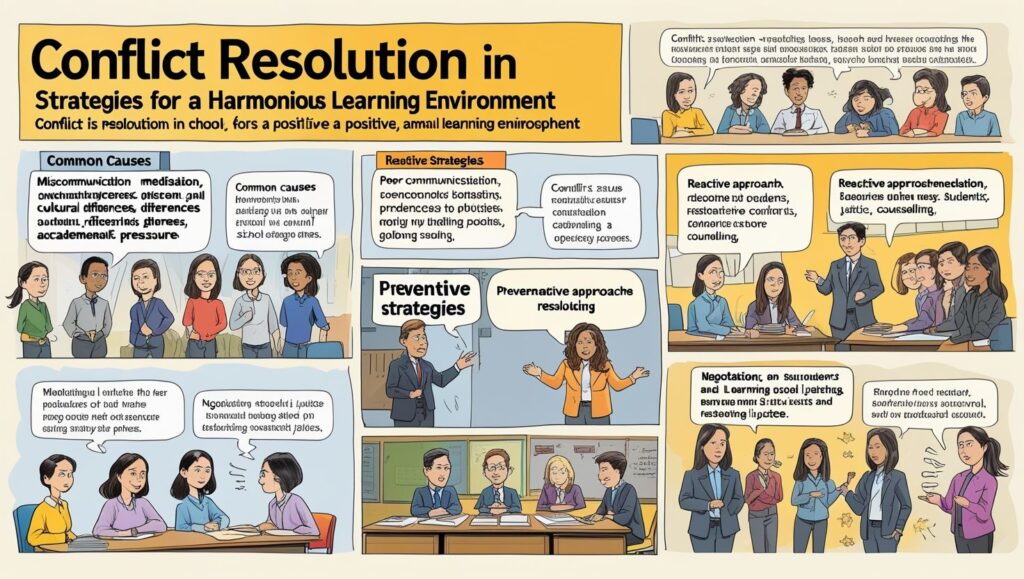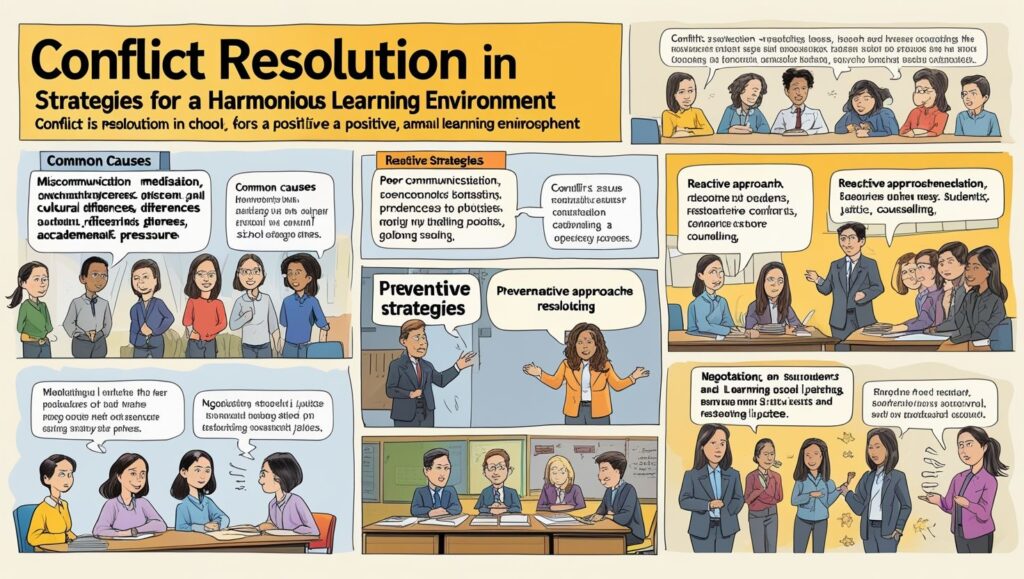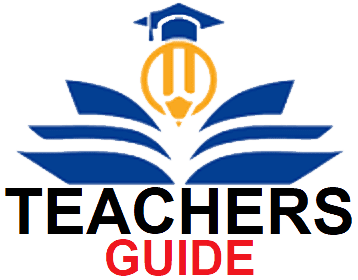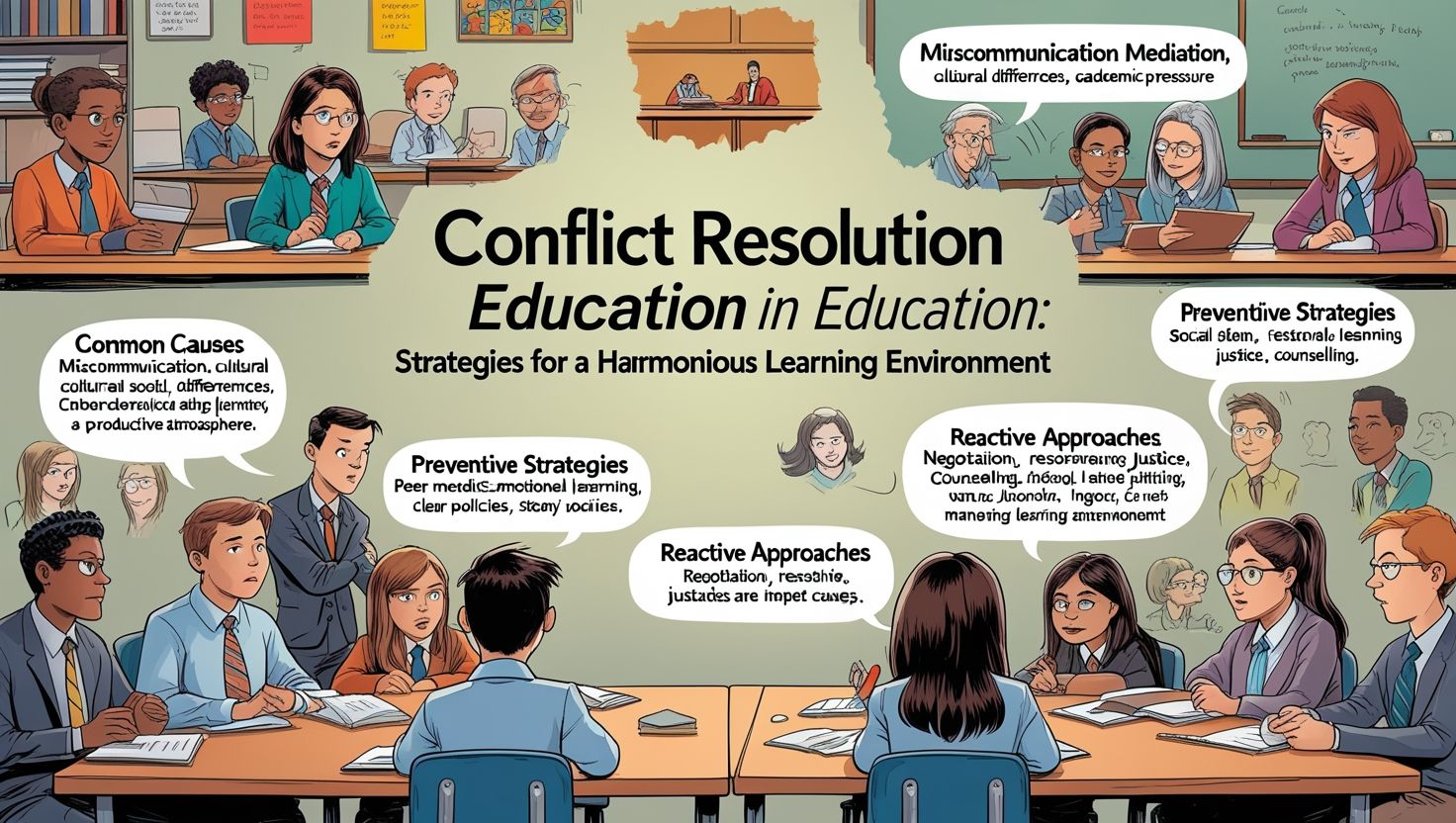Introduction
Conflict Resolution in Education for Learning Environment, Conflict is an inevitable part of human interaction, and educational institutions are no exception. Schools, colleges, and universities are dynamic environments where students, teachers, administrators, and parents interact daily, often leading to disagreements and disputes. Effective conflict resolution in education is crucial for maintaining a positive learning atmosphere, fostering healthy relationships, and ensuring academic success.
This article explores the nature of conflicts in educational settings, their causes, and various strategies for resolution. It also examines the role of educators, students, and administrators in managing conflicts constructively.
Understanding Conflict in Education
Conflict in education can arise from various sources, including:
- Student-Student Conflicts – Bullying, peer pressure, competition, and misunderstandings among students.
- Teacher-Student Conflicts – Disagreements over grades, disciplinary actions, or teaching methods.
- Teacher-Parent Conflicts – Differences in expectations regarding a child’s performance or behavior.
- Administrative Conflicts – Disputes between staff members, teachers, and school management over policies, workload, or resource allocation.
If not addressed properly, these conflicts can escalate, leading to decreased academic performance, emotional distress, and even violence. Therefore, schools must adopt structured conflict resolution techniques.
Causes of Conflict in Education
Several factors contribute to conflicts in educational settings:
1. Communication Breakdown
Miscommunication or lack of open dialogue often leads to misunderstandings. Students may feel unheard, teachers may feel disrespected, and parents may feel excluded from decision-making.
2. Cultural and Social Differences
Diverse classrooms bring together students from different backgrounds, leading to clashes in values, beliefs, and behaviors.
3. Power Imbalances
Hierarchical structures in schools can create tension between students and teachers or between staff and administrators.
4. Academic Pressure
High expectations from parents and teachers can lead to stress, competition, and conflicts over grades and performance.
5. Resource Scarcity
Limited access to facilities, funding, or teaching materials can create disputes among staff and students.

Conflict Resolution Strategies in Education
To create a harmonious learning environment, schools must implement effective conflict resolution strategies. These can be categorized into preventive and reactive approaches.
Preventive Strategies
1. Promoting a Positive School Climate
A supportive and inclusive school culture reduces conflicts. Schools should encourage respect, empathy, and collaboration through:
- Anti-bullying programs
- Team-building activities
- Social-emotional learning (SEL) curricula
2. Effective Communication Policies
Open communication channels help prevent misunderstandings. Strategies include:
- Regular parent-teacher meetings
- Student feedback systems
- Transparent administrative policies
3. Peer Mediation Programs
Training students to mediate conflicts among their peers fosters responsibility and problem-solving skills. Peer mediators can help resolve minor disputes before they escalate.
Reactive Strategies
When conflicts arise, the following methods can help resolve them effectively:
1. Mediation
A neutral third party facilitates a discussion between conflicting parties to reach a mutually acceptable solution. Mediation is useful for:
- Student disputes
- Teacher-parent disagreements
- Staff conflicts
2. Negotiation
Encouraging parties to discuss their differences and find a compromise. Teachers and administrators can guide students in negotiation techniques.
3. Restorative Justice
This approach focuses on repairing harm rather than punishment. It involves:
- Dialogue between offender and victim
- Community-building circles
- Accountability and reconciliation
4. Counseling and Support Services
School counselors play a vital role in resolving emotional and psychological conflicts. They provide:
- Individual counseling
- Group therapy sessions
- Conflict resolution workshops
5. Clear Disciplinary Policies
Well-defined rules and consequences help manage conflicts fairly. Schools should ensure that disciplinary actions are consistent and transparent.

The Role of Educators in Conflict Resolution
Teachers and school leaders are key players in managing conflicts. Their responsibilities include:
1. Modeling Positive Behavior
Educators should demonstrate respect, patience, and active listening to set an example for students.
2. Teaching Conflict Resolution Skills
Incorporating conflict resolution into the curriculum helps students develop essential life skills. Activities may include:
- Role-playing scenarios
- Debates and discussions
- Collaborative projects
3. Early Intervention
Addressing conflicts at an early stage prevents escalation. Teachers should be trained to recognize signs of tension and intervene appropriately.
The Role of Students in Conflict Resolution
Students must also take responsibility for resolving conflicts constructively. They can:
- Practice empathy and active listening
- Use “I” statements to express feelings without blame
- Seek mediation when needed
The Role of Parents and the Community
Parents and community members contribute to conflict resolution by:
- Supporting school policies
- Encouraging open communication at home
- Participating in school conflict resolution programs
Challenges in Conflict Resolution
Despite best efforts, schools may face challenges such as:
- Resistance to mediation from involved parties
- Lack of training for staff and students
- Cultural barriers in communication
To overcome these challenges, schools should invest in professional development and community engagement.
Conclusion
Conflict resolution in education is essential for creating a safe and productive learning environment. By implementing preventive measures, fostering communication, and using structured resolution techniques, schools can minimize disruptions and promote positive relationships among students, teachers, and parents.
Educators, students, and the community must work together to address conflicts constructively. With the right strategies, schools can transform conflicts into opportunities for growth, collaboration, and mutual understanding.
Final Thoughts
Conflict Resolution in Education: Strategies for Learning Environment, Conflict is not inherently negative—it can lead to positive change when managed effectively. By prioritizing conflict resolution, educational institutions can nurture a culture of respect, empathy, and lifelong learning.


seo 2025 buyhacklink.com https://www.sakaryadahaber.com/ https://www.sakaryadahaber.com/
n1ruku
Thank.
Thank.
Thank.
Thank.
Thank.
Thank.
Thank.
Thank.
Thank.
Thank.
Thank.
Thank.
Thank.
Thank.
Thank.
Thank.
Thank.
Thank.
Thank.
Thank.
Thank.
Thank.
Thank.
Thank.
Thank.
Thank.
Thank.
Thank.
Thank.
Thank.
Thank.
Thank.
Thank.
Thank.
Thank.
Thank.
Thank.
Thank.
Thank.
Thank.
Thank.
Thank.
Thank.
Thank.
Thank.
Thank.
Thank.
Thank.